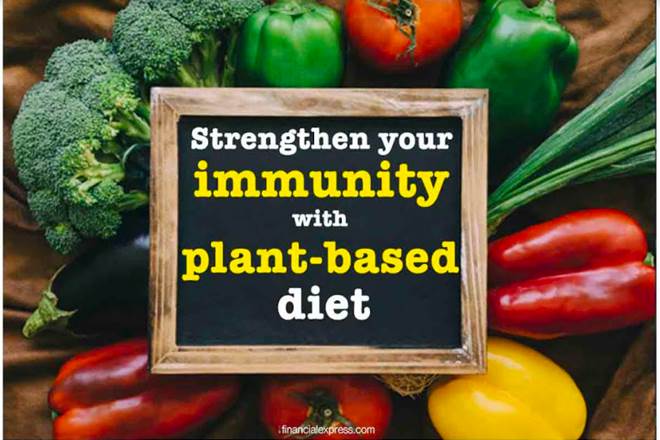
Joel Fuhrman wrote Eat to Live in 2003. It claims to help people lose weight. It recommends getting 90 percent of your calories from plant-based foods. This diet has been shown to lower the chance of stomach and prostate cancer. It also decreases hypertension. There are also some disadvantages. You must eat a balanced diet in order to safely lose weight. You must avoid sugary processed foods and trans fats in order to achieve this goal.
Requires 90 percent of calories from unrefined plant-based foods
The principle behind a plant-based diet is to eat mostly plant-based foods, which include vegetables, fruit, whole grains, nuts, seeds, pulses, and legumes. This type of diet is good for weight loss and can reduce the risk of chronic diseases like heart disease, stroke and type 2 diabetics. Plant-based diets are better for the earth because you will be consuming less greenhouse gases.
While most studies included in the review were performed in the United States of America, some were conducted abroad, including in Australia, Canada. The majority of included studies were published in 2010 or later. A few included case reports with shorter durations than five years.

Lowers your risk of developing prostate cancer
There are several factors that reduce the risk of prostate cancer. Diet is the most important. The second is diet. Increasing the number of fruits, vegetables and decreasing the consumption of dairy products will reduce your risk. Study after study has shown that those who consume most dairy products are at greater risk for developing the disease. You shouldn't eat dairy products, but the risk is not too high.
Vegetables are full of cancer-fighting phenolics. High levels of lycopene can stop the growth of prostate tumor cells, making vegetables a great choice. Consuming these foods regularly will greatly reduce your risk of developing prostate cancer.
Increased risk for stomach cancer
There are many risk factors to developing stomach cancer. This risk is increased for those who have had stomach surgery or have a family history. The disease is more common in people who smoke and those who have had their stomachs removed. These surgeries reduce stomach acid production, which can cause harmful bacteria to grow and lead to cancer. Cancer cells can spread to other areas of the body.
Studies have shown that stomach cancer risk is higher in people who were malnourished as children. The risk is highest for people between the ages of 1960-1964 to 1970-1974. However, it is lower for those between 1985 and 1989. Although stomach cancer risk decreases with age, the proportion of those between 50 and 54 was still high. People in this age range were also at greater risk of developing stomach carcinoma than those in the 65-1999 age bracket.

Reduces risk of hypertension
A diet rich in fruits or vegetables can lower blood pressure. Research shows that this diet can lower hypertension risk up to 10%. It can also lower cholesterol. A daily intake of 1,500mg sodium should not be exceeded.
The USDA recommends that people consume at least 2 cups of fruits and 3 cups of vegetables every day. This depends on their age and gender. Blueberries and strawberries are rich in anthocyanins. According to one study, people with high amounts of anthocyanins had a 8% lower chance of developing hypertension. However, some experts have questioned the validity of this finding.
FAQ
How do I determine what's good?
You need to listen to your body. Your body is the best judge of how much exercise, food and rest you should get. To avoid overdoing it, it's important that you pay attention to what your body is telling you. Listen to your body and make sure you're doing everything you can to stay healthy.
How can I control my blood pressure?
The first thing you need to do is find out what causes high blood pressure. Next, take steps that will reduce the risk. These could include eating less salt and losing weight if needed, as well as taking medication if necessary.
Also, make sure to get enough exercise. You can also walk if you don’t have the time.
If you are unhappy about how much exercise you do, you might consider joining a fitness club. You will likely want to join an exercise group that shares your goals. It is easier to adhere to a fitness routine when someone else will be there with you.
Does cold make you weaker?
There are two types of people in the world: those who love winter and those that hate it. It doesn't really matter whether you love winter or you hate it. You might wonder why you feel so bad when it's cold.
The truth is that our bodies are built to function in warm temperatures. Our bodies were designed to thrive in hot weather because this is where the majority of our food sources are.
We live in a very different environment than our ancestors. We spend a lot more time indoors, and are more likely to be exposed to extreme temperatures like heat and cold.
Because of this, our bodies have become accustomed to extremes. That means that when we do venture outdoors, we're left feeling tired, sluggish, and even sick.
These effects can be reversed, however. You can combat these effects by making sure you are well-hydrated all day. If you drink plenty of water, you'll help keep your body properly hydrated and flush toxins from your system.
A healthy diet is another important thing. Eating nutritious foods helps your body maintain its optimal temperature. This is especially important for those who spend long periods inside.
Consider taking a few moments each morning to meditate. Meditation helps you relax your mind and body, which makes it easier to deal with stress and illness.
What's the difference between a virus & a bacterium?
A virus can be described as a microscopic organism incapable of reproducing outside its host cell. A bacterium is an organism that splits itself in two. Viruses can be as small as 20 nanometers, while bacteria can grow up to 1 micron.
Viruses are usually spread through contact with infected bodily fluids, including saliva, urine, semen, vaginal secretions, pus, and feces. Bacteria are often spread via direct contact with contaminated surfaces and objects.
Viral infections may enter the body through cuts, scrapes. bites and other skin breaks. They can also enter the body through the nose and mouth, eyes, ears or rectum.
Bacteria may enter our bodies through cuts and scrapes on our skin, burns, insect bites, and other wounds. They can also get into our bodies via food, water or soil.
Viruses and bacteria both cause illness. Viruses cannot multiply in their host cells. So they only cause illnesses when they infect living cells.
Bacteria can spread within the host and cause illness. They can even invade other parts of the body. They can even invade other parts of the body, which is why antibiotics are necessary to eradicate them.
Statistics
- WHO recommends consuming less than 5% of total energy intake for additional health benefits. (who.int)
- This article received 11 testimonials and 86% of readers who voted found it helpful, earning it our reader-approved status. (wikihow.com)
- According to the Physical Activity Guidelines for Americans, we should strive for at least 150 minutes of moderate intensity activity each week (54Trusted Source Smoking, harmful use of drugs, and alcohol abuse can all seriously negatively affect your health. (healthline.com)
- The Dietary Guidelines for Americans recommend keeping added sugar intake below 10% of your daily calorie intake, while the World Health Organization recommends slashing added sugars to 5% or less of your daily calories for optimal health (59Trusted (healthline.com)
External Links
How To
What does the "vitamin") mean?
Vitamins are organic compounds that can be found in foods. Vitamins help us absorb nutrients from foods we eat. Vitamins cannot be made by the body; they must be taken from food.
There are two types of vitamins: water soluble and fat soluble. Water soluble vitamins dissolve easily in water. Some examples include vitamin C,B1 and B2 vitamins (thiamine), B2 and riboflavin, B3 and niacin, B6 vitamins (pyridoxine), B6 vitamins (niacin), folic acids, biotin, pantothenic acids, and Choline. Fat soluble vitamins are stored in the liver and fatty tissue. Vitamin D, E, K and A are some examples.
Vitamins are classified according to their biological activity. There are eight major groups of vitamins:
-
A - essential for normal growth and maintenance of health.
-
C - important for proper nerve function and energy production.
-
D - essential for healthy teeth and bones.
-
E - needed for good vision and reproduction.
-
K - Required for healthy nerves and muscles.
-
P – vital for building strong bones.
-
Q - aids in digestion of iron and iron absorption
-
R – Required for making red blood vessels.
The recommended daily allowance of vitamins (RDA), varies depending upon age, gender, physical condition, and other factors. RDA values are set by the U.S. Food and Drug Administration (FDA).
For adults aged 19 or older, the RDA of vitamin A is 400mg per day. However, pregnant women need 600 micrograms per day because it is important for fetal development. Children ages 1-8 require 900 micrograms per day. Infants under one year of age require 700 micrograms per day, but this amount decreases to 500 micrograms per day between 9 months and 12 months of age.
Children ages 1-18years who are obese need 800 micrograms per day while those who are overweight need 1000 micrograms per day and children who are underweight need 1200 micrograms per day to meet their nutritional needs.
Children ages 4-8 years who have been diagnosed with anemia need 2200 micrograms per day of vitamin C.
2000 micrograms are required daily for good health in adults over 50. Breastfeeding or pregnant women require 3000 micrograms per daily due to higher nutrient demands.
Adults over 70 require 1500 micrograms each day, since they lose approximately 10% of muscle mass each decade.
Women who are pregnant or lactating need more than the RDA. Pregnant women need 4000 micrograms per dayduring pregnancy and 2500 micrograms per day after delivery. Breastfeeding mothers require 5000 micrograms daily when breast milk production is occurring.